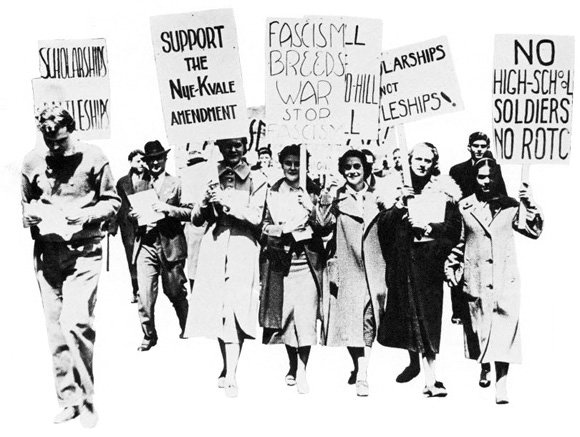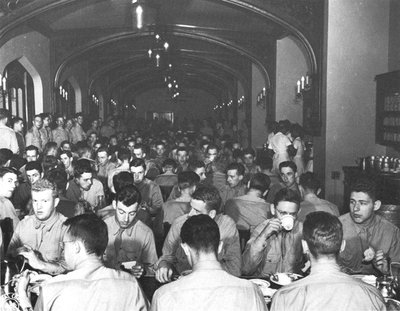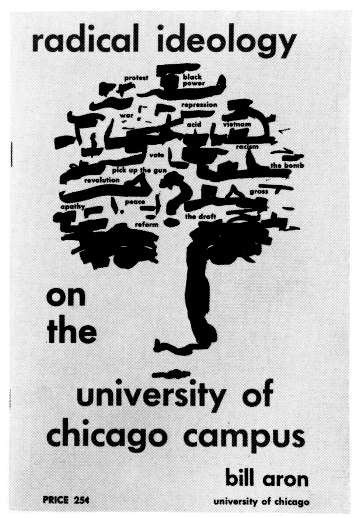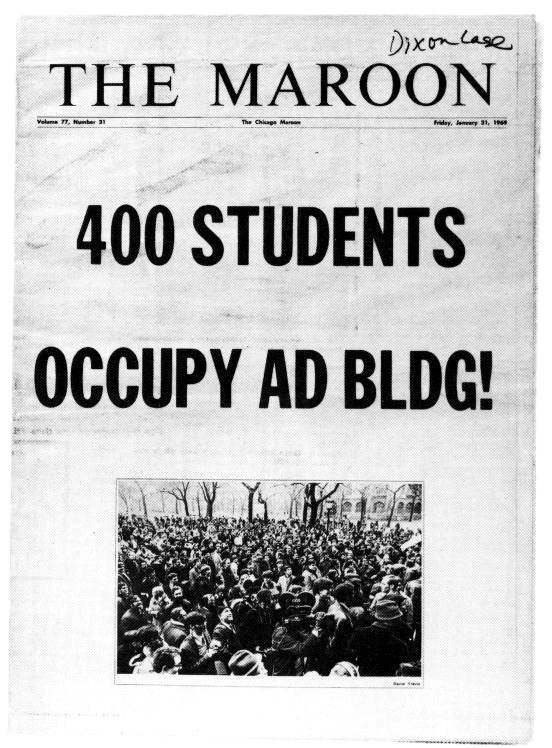War, Peace, and Politics

Like many other Americans, University students were swept up in the patriotic passions of the Great War. Hundreds joined the newly formed campus ROTC detachment.
In the University's first month students gathered for a mock presidential election, which revealed the popularity of the Prohibitionist candidate who won by a landslide. Over the first quarter-century, students also expressed their desire for a fraternity system and voiced their opposition to the segregated class experiment of 1902.
The onset of American involvement in World War I brought students into direct engagement with issues of national foreign policy. Swept up in a patriotic surge, 550 students joined the newly formed University detachment of the Reserve Officers' Training Corps and carried on active training in infantry drill. A student ambulance company was organized under the auspices of the American Red Cross and saw action on the front in France. More than sixty students lost their lives in the war, some in combat and others from disease.
Intense student activism continued in the 1930s. When the University itself was investigated by Illinois stale legislators in 1935 for supposedly harboring subversives on its faculty, students supported President Hutchins's staunch defense of academic freedom. Later in the decade, students demonstrated against the ROTC and rallied against fascism and war as international conflict in Europe threatened once again to involve the United States.
Students were not of one mind, of course, when it came to formulating an opinion on the war in Europe. The Socialist Club was unequivocal about its opposition to war, and in 1936 and 1937 it attempted to secure student involvement in national and international student strikes against "the men who can plunge the world into conflict." Other students who opposed the war led relief drives for citizens whose countries had become embroiled in the hostilities.

In a moment of lighthearted political activism, supporters of President Herbert Hoover's re-election scored a symbolic victory for the Republican party. Photograph by Westelin.

The "peace strike" encompassed many of the issues which concerned students. From left to right the banners called for more spending for schools and less on the military, support for Senator Nye's neutrality act, opposition to fascism, and an end to ROTC training on campus.

World War II brought an influx of uniformed students to campus for advanced technical training. Photograph by U. S. Army Signal Corps.
After World War II, conservatives and the House Committee on Un-American Activities charged that universities "had been the breeding grounds of a series of insidious, communist inspired organizations." In response, students, faculty, and the administration alike rallied together to defend the University, galvanized by a common interest in protecting academic freedom. The student group American Youth for Democracy believed that the University, as a microcosm of society, had to remain steadfast against these attacks lest infringements upon freedom and free thought spread to other institutions and the rest of society.
By the 1960s some students at the University of Chicago had become suspicious of authority, especially the administration, which they no longer viewed as a partner in higher education but as a privileged elite. Several student groups formed on campus to protest the war in Vietnam. As in the late 1930s, political alignments differed. Some promoted Democrat Eugene McCarthy as the peace candidate in the 1968 election; others chose to march and protest in Chicago or Washington, D.C.; still others, the majority, continued their studies and remained committed to the academic enterprise.
The sharpest protests were
products of a tumultuous era and the occasion of controversial events
on campus. A dinner marking the inauguration of President Edward H. Levi
was disrupted by anti-war protesters, and in early 1969 the University
was more directly confronted when a group of protesters occupied the Administration
Building. After the protesters abandoned their occupation two weeks later,
University disciplinary committees held individual hearings for students
involved in the sit-in and suspended eighty-one expelled forty-two, and
placed three on probation.

Sociology graduate student Bill Aron (AM 1969, PhD 1972) conducted his doctoral research on student attitudes toward social and political problems at home and abroad. The cover of this pamphlet summarizing his research expressed the numerous issues about which students were concerned.
More recent campus political activity has re-emphasized the historical pattern of ideological diversity within the student body. Some students have demonstrated against South African apartheid or protested sexual discrimination and the mistreatment of racial minorities while others have promoted neoconservative thought and defended a wholly free market economy. In these and other ways, the tradition of student activism continues to provoke and challenge.


